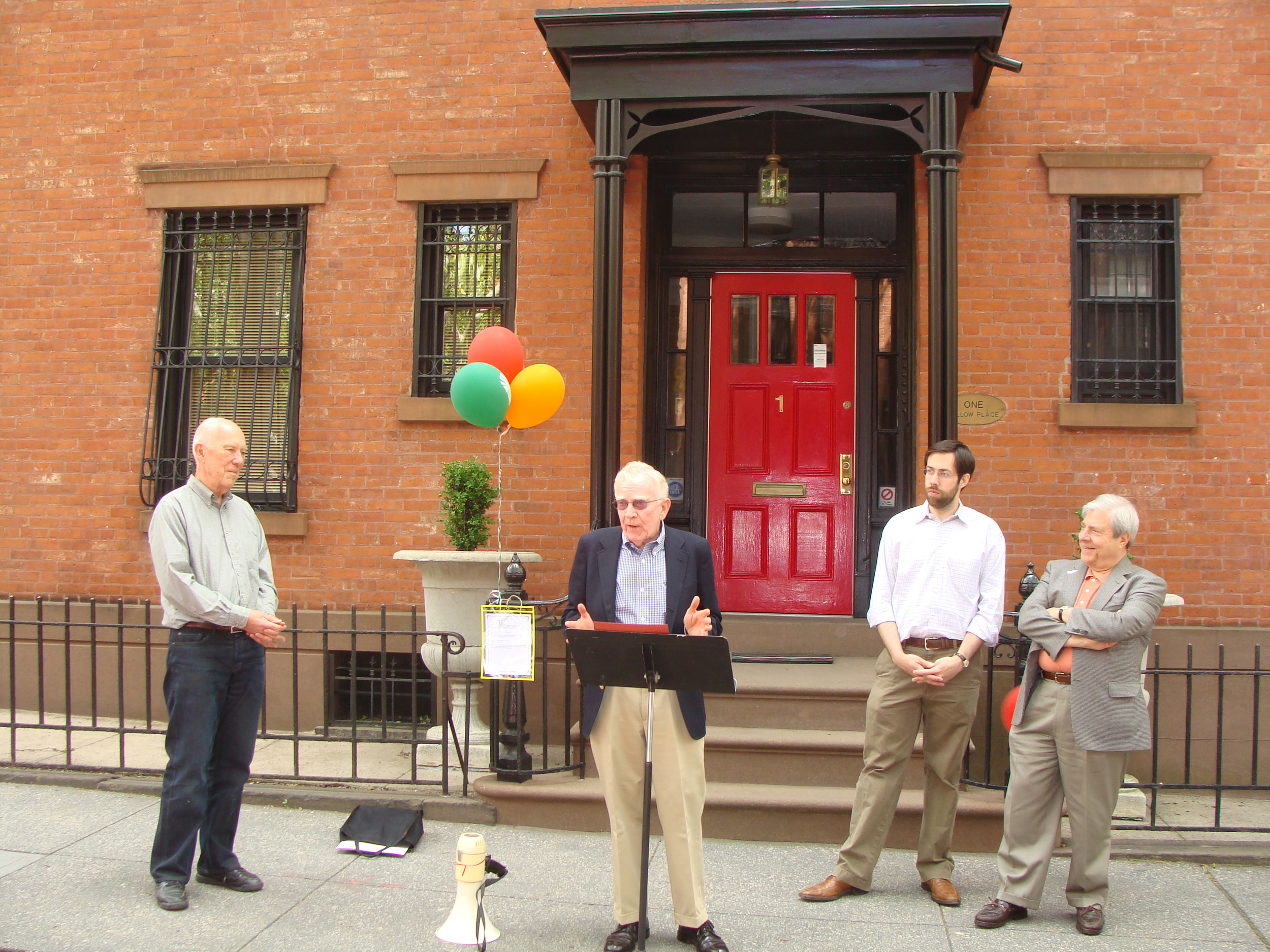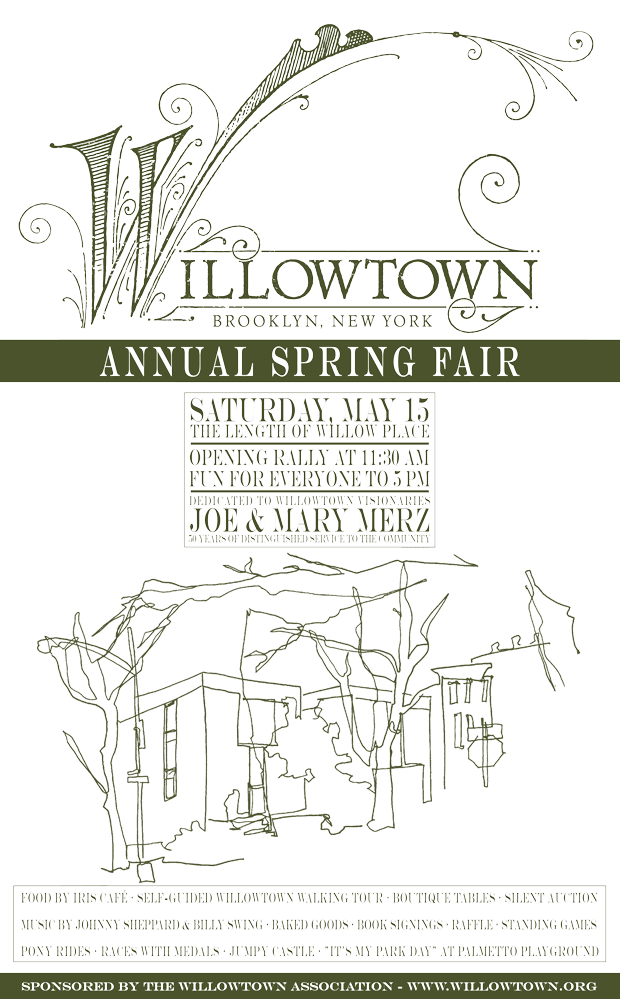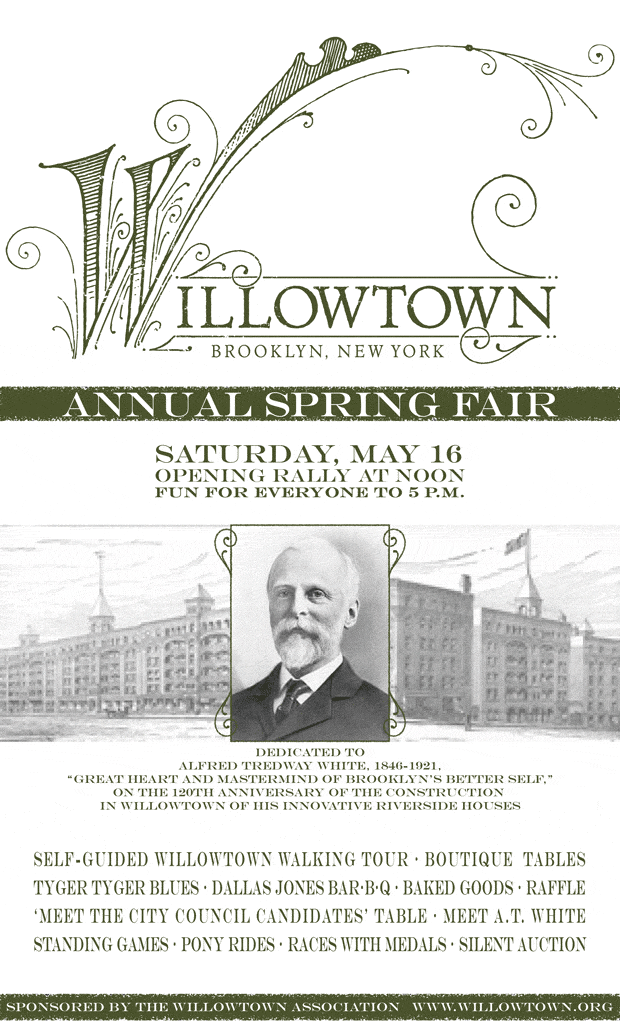The following talk was given by historic preservationist Otis Pratt Pearsall at the rally opening the 2010 Spring Fair of the Willowtown Association on Saturday, May 15:

I ask you, what could be finer on this gorgeous day than to be right here in beautiful Willowtown–this wellspring of preservation where the fervor is still palpable, thank God–to celebrate Mary and Joe Merz, my preservationist running mates of literally 50 years, who in various combinations together and with others have done it all.
In sum, what they’ve done is no less than secure amidst the swirling turbulence of New York this tranquil node of sheer architectural beauty that as a living, breathing, vibrant community is just about as perfect as it gets, anywhere. How’s that for a legacy!
And while we’re at it, let’s not forget the early contributions of other Willowtowners, such as Malcolm Chesney of 8 Willow Place, one of the organizers and treasurer of CCIC, the Community Conservation and Improvement Council, which kicked off the whole movement; Arthur Hooker, the first head of our statutory drafting effort, who lived just beyond the powerhouse; and Joe Maggio of 11 Willow Place.
By 1960 Joe had assumed his place as a member of the Brooklyn Height Association’s Preservation Committee. He and Mary, both graduates of Edward Larrabee Barnes’ architectural office, were just setting up their own practice in their carriage house home on Grace Court. And it wouldn’t be long before Mary and Joe, as natural-born idealists bent on neighborhood improvement and not al all as money-grabbing developers, began eyeing the empty lots on a very fragile Willow Place.
But meanwhile, the Heights had a problem. Four years after attempting to jump-start preservation for the very first time in New York, its initiative was stymied and appeared likely to remain so while unsympathetic renovations hostile to the neighborhood’s historic fabric accelerated along with its popularity. Something had to be done to hold the fort. And so, when the BHA in 1962 sponsored establishment of the Design Advisory Council to provide free architectural guidance to property owners, Joe and a tiny band of colleagues volunteered and over the next five years worked unceasingly in more than 100 separate cases to safeguard our architectural heritage.
This was an absolutely invaluable service to the cause of preservation, now, of course, lost in the mists of time. But fate had in store for Mary and Joe a singular preservation contribution more important by magnitudes–the rescue of Willow Place and, by extension, the rescue of Willowtown, which was then under the baleful eye of the Housing and Redevelopment Board and facing the imminent threat of a fateful "Urban Renewal Study."
I hope that Mary and Joe will write up and document the dramatic story of how, along with another former Edward Larrabee Barnes colleague, they were able to purchase the vacant lots on Willow Place at city auction and with help along the way from Mrs. Darwin James to complete in 1965 their meticulously scaled, award-winning houses in a startlingly appropriate modern idiom.
Willow Place was already an architecturally conspicuous block, boasting multiple houses on the Municipal Art Society’s 1957 listing of buildings that should be preserved. But construction of the Merz houses, with far less bulk than zoning allowed, and handsomely designed for their specific sites, was the crucial vote of confidence.
And what’s more, their Modernist idiom directly inspired the BHA philosophy, welcomed by the early landmarks commissions, that continues contributing to the treasure trove of Heights architecture–each new building should represent the finest architecture contemporary with its date of construction. So it was that the influence of the Merz houses was specifically responsible for the Modernist architecture of the first new building in an historic district, Ulrich Franzen’s well-received Watchtower building at the corner of Pineapple Street and Columbia Heights.
While, of course, all of this took place quite some time ago, Mary and Joe are hardly ones (unlike some today) to take the ongoing preservation of our historic architecture for granted. Far from complacent, they have recognized all along that vigilance and the community’s tenacious readiness to push back, not a gentle reliance on big brother, is the only practical way to defend the integrity of our historic district. And so, at the sound of the bugle, they spring to the barricades, just as comfortable, for example, defending the Candy factory sculpture garden in the northeast corner of the Heights as rising to the defense of the Riverside courtyard here at home.
Mary and Joe are indeed role models for all seasons, and we are both humbled and inspired by their example.




